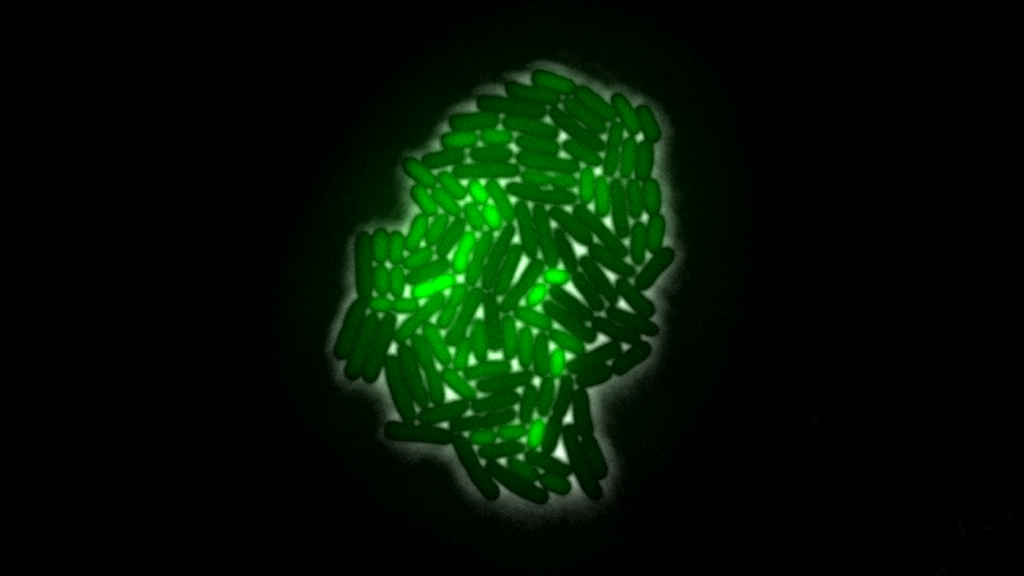
Noisy expression of stress response in microcolony of E. coli.
Mutations in the genome of an organism give rise to variations in its form and function—its phenotype. However, phenotypic variations can also arise in other ways. The random collisions of molecules constituting an organism—including its DNA and the proteins that transcribe the DNA to RNA—result in noisy gene expression that can lead to variations in behavior even in the absence of mutations. In a research paper published in Nature Communications (opens in new tab), researchers at Microsoft Research and the University of Cambridge have discovered how bacteria can couple noisy gene expression with noisy growth to survive rapidly changing environments.
“We have taken advantage of advances in microfluidics technology, time-lapse microscopy, and the availability of libraries of genetically modified bacteria that have happened in the past decade or so to provide unprecedented detail of how single cells survive stress,” says Microsoft PhD Scholar Om Patange. (opens in new tab) “We hope this will help fellow researchers see that studies of bacteria at the single-cell level can reveal important aspects of how these organisms live and contend with their environment.”

Spotlight: Microsoft research newsletter
Cells stochastically turn on their stress response and slow down growth to survive future stressful times. A montage of E. coli grown in a microfluidics device illustrates this phenomenon.
Using a microfluidic device, Patange—together with colleagues and cosupervisors Andrew Phillips (opens in new tab), head of Microsoft Research’s Biological Computation group (opens in new tab), and James Locke (opens in new tab), research group leader at Cambridge’s Sainsbury Laboratory—observed single Escherichia coli cells grow and divide over many generations. They found that a key regulator of stress response called RpoS pulsed on and off. When these happily growing cells were exposed to a sudden chemical stress, the few cells ready for the stress survived. This is a striking example of a microbial population partitioning into two populations despite being of the same genetic makeup. The researchers further discovered that the surviving population was paying a cost to survive: They grew slower than their neighbors.
To uncover the mechanism causing the cells to grow slowly and turn on their stress response, the researchers developed a stochastic simulation of biological reactions inside single cells. They found that a simple mutual inhibitory coupling of noisy stress response and noisy growth caused the pulses observed and also captured more subtle observations.
This study, for which single-cell datasets are available on GitLab (opens in new tab), has both pure and applied implications. The stress response phenomenon may be related to persistence, a strategy used by bacteria to evade antibiotics without mutations. Understanding the connection between persistence and stress response may lead to more nuanced approaches to antibiotic treatments. The idea that bacteria have evolved a population-level phenotype governed by single-cell actions is also intriguing. Understanding the benefit gained by the population at the expense of single bacteria may yield insights into the evolution of cooperative strategies.
“The bacteria might teach us about cooperative strategies we haven’t already come up with,” says Patange. “We might also learn how to use and defend against bacteria better if we can see the world from their perspective.”





